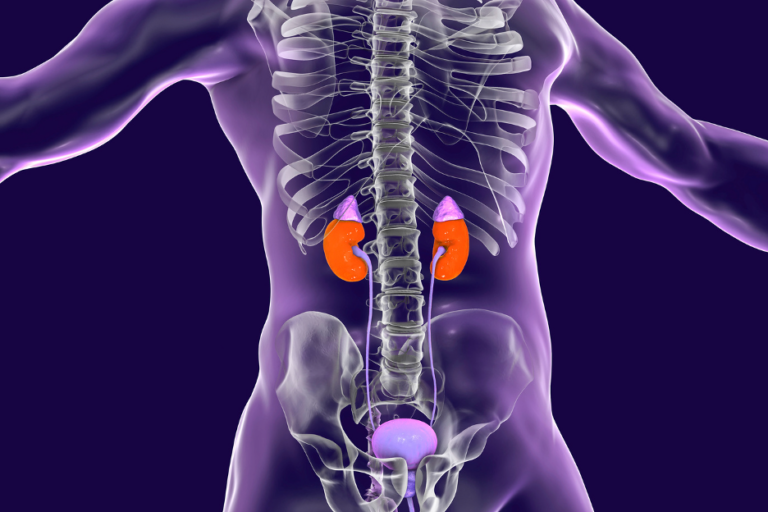Hormone Replacement Therapy (HRT) is a widely used and effective treatment for managing the symptoms of menopause. As women enter menopause, levels of key hormones such as estrogen, progesterone, and testosterone decrease significantly, leading to a range of unpleasant symptoms. HRT works by replacing these hormones to relieve symptoms and improve quality of life. There are two primary types of HRT: prescription HRTs and bioidentical HRTs. Understanding the differences between these options can help you make informed decisions about your menopause management.
What is Hormone Replacement Therapy (HRT)?
Overview
Hormone Replacement Therapy involves supplementing the body with hormones that are diminished during menopause. The primary hormones used in HRT are:
Testosterone: Although commonly associated with men, testosterone also plays a vital role in women’s health, contributing to libido, energy levels, and muscle strength. Some women may benefit from testosterone supplementation as part of HRT.
Estrogen: This hormone is central to regulating the menstrual cycle and maintaining reproductive health. During menopause, reduced estrogen levels can lead to symptoms such as hot flashes, night sweats, vaginal dryness, and bone density loss.
Progesterone: Often used in combination with estrogen in women who still have their uterus, progesterone helps reduce the risk of uterine cancer that can be associated with estrogen therapy.
Benefits of Hormone Replacement Therapy
HRT can effectively alleviate many menopause symptoms by restoring hormone levels closer to their pre-menopausal state. Benefits include:
Mood Stabilization and Sleep Quality: HRT can improve mood swings and enhance sleep quality, contributing to overall well-being.
Relief from Hot Flashes and Night Sweats: Estrogen therapy can significantly reduce the frequency and severity of these symptoms.
Improved Vaginal Health: Estrogen helps alleviate vaginal dryness, discomfort during intercourse, and urinary symptoms.
Bone Health: HRT can slow bone loss and reduce the risk of osteoporosis and fractures in postmenopausal women.
What Are Prescription HRTs?
Overview
Prescription HRTs are medications approved by the U.S. Food and Drug Administration (FDA) for treating menopause symptoms. They come in various formulations, including oral tablets, patches, creams, gels, and sprays, and typically contain estrogen, progesterone, or a combination of both.
Benefits of Prescription HRTs
- Regulation and Testing: Prescription HRTs are FDA-approved, meaning they undergo rigorous testing for safety, efficacy, and consistency. This ensures they meet strict quality standards.
- Standardized Dosages: These medications are available in standardized dosages, which help maintain consistent hormone levels in the body, reducing the risk of adverse effects.
- Proven Efficacy: Numerous studies show that prescription HRTs effectively alleviate menopausal symptoms, such as hot flashes, night sweats, and mood swings, providing significant relief to many women.
- Insurance Coverage: Prescription HRTs are typically covered by insurance plans, making them more accessible and affordable for many women.
Potential Drawbacks
Side Effects: Like any medication, prescription HRTs can have side effects, such as bloating, breast tenderness, and nausea. However, these are often manageable with the guidance of a healthcare provider.
Limited Customization: Prescription HRTs are available in fixed doses and formulations, which may not be suitable for women with unique hormonal needs or sensitivities.
What Are Bioidentical HRTs?
Overview
Bioidentical HRTs involve the use of hormones that are chemically identical to those produced by the human body. These hormones can be derived from plant sources, such as yams or soy, and are formulated to have the same molecular structure as endogenous hormones. Bioidentical hormones can be prescribed in standard doses like traditional HRTs or can be custom-compounded to meet the specific needs of an individual patient.
Benefits of Bioidentical HRTs
- Chemical Identicality: Because bioidentical hormones have the same molecular structure as the body’s own hormones, they are often considered more “natural” by patients and some healthcare providers. This similarity can potentially lead to better compatibility and fewer side effects.
- Customization: Bioidentical HRTs can be custom-compounded to fit a patient’s specific hormonal needs. This means that hormone levels can be precisely tailored, potentially offering a more personalized approach to menopause management.
- Diverse Delivery Options: Bioidentical hormones can be administered in various forms, such as creams, gels, pills, patches, or sublingual troches, offering flexible options based on patient preference and absorption needs.
- Patient Preference: Many patients report feeling more comfortable and experiencing fewer side effects with bioidentical hormones, believing them to be safer or more natural due to their identicality to human hormones.
Potential Drawbacks
Insurance Coverage: Custom-compounded bioidentical HRTs may not be covered by insurance, potentially leading to higher out-of-pocket costs for patients.
Lack of FDA Approval for Custom Compounded Versions: While some bioidentical hormones are FDA-approved and available in standardized prescriptions, custom-compounded bioidentical hormones do not undergo the same level of regulation and testing as FDA-approved products. This can lead to variability in potency, quality, and efficacy.
Inconsistent Dosing: Custom compounding can result in inconsistent dosing and hormone levels, potentially affecting symptom relief and safety.
Limited Research: While bioidentical hormones are popular, there is less robust scientific evidence supporting their safety and efficacy compared to traditional prescription HRTs. This can make it challenging to fully assess their benefits and risks.
Making an Informed Choice
Key Considerations
When deciding between prescription HRTs and bioidentical HRTs, consider the following factors:
- Safety and Regulation: Prescription HRTs offer a regulated and tested approach, ensuring consistent quality and efficacy. Bioidentical HRTs, especially those that are custom-compounded, may offer more personalized options but lack standardized quality assurance.
- Customization Needs: If you have specific hormonal imbalances or sensitivities, bioidentical HRTs may offer more tailored solutions. However, it is crucial to work with a knowledgeable healthcare provider to ensure safe and effective treatment.
- Side Effects and Allergies: Discuss any potential side effects or allergies with your healthcare provider to determine the most suitable option for your needs.
- Cost and Accessibility: Consider the cost and insurance coverage of each option, as this may impact your decision.
Consulting Your Healthcare Provider
Ultimately, the decision between prescription and bioidentical HRTs should be made in consultation with a healthcare provider who understands your individual needs and health history. They can help assess the risks and benefits of each option, guiding you toward the most appropriate treatment plan.
Conclusion
Both prescription and bioidentical HRTs offer viable options for managing menopause symptoms by restoring hormone levels and providing relief from the associated discomfort. Many women experience great success with both types of HRTs, finding significant relief from extreme symptoms and improved quality of life. By understanding the differences and consulting with your healthcare provider, you can make an informed decision that aligns with your health goals and lifestyle. Remember that menopause management is a personal journey, and the right choice will depend on your unique needs and preferences.











